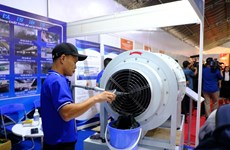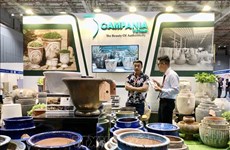Ways to escape of subcontractorship or foreign trademark sought
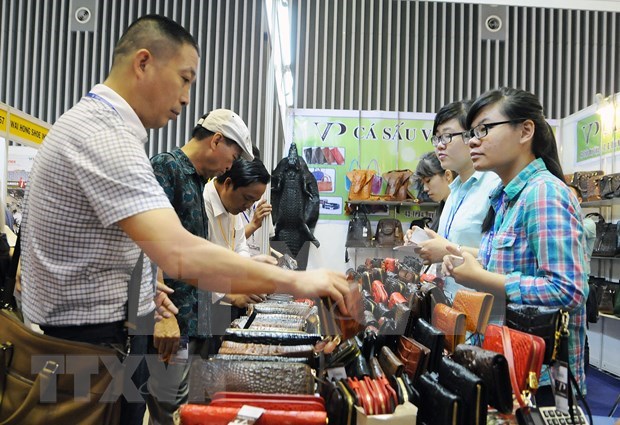 Visitors at a trade fair (Photo: VNA)
Visitors at a trade fair (Photo: VNA)
Hanoi (VNA) - Vice President of the Lefaso revealed that many domestic leather and footwear enterprises have created collections and designs to offer to their customers, rather than depending on their partners.
Vietnam’s leather and footwear exports sustained a high growth in 2018 and became an important contributor to the national economy.
In an interview, Vice President of the Vietnam Leather, Footwear and Handbag Association Phan Thi Thanh Xuan said along with the development of materials and accessories, Vietnamese firms have invested heavily in the design development. This is a breakthrough for the country’s industry to gradually affirm its position in the international arena.
- Looking back the year 2018, what are the most prominent achievements of the leather and footwear industry, Madame?
Phan Thi Thanh Xuan: The export revenue of the industry in 2018 is estimated at 19.5 billion USD, which marks an increase of 8.5 percent over the figure recorded iin 2-17 and represents 8 percent of the country’s total export revenue. This is an impressive achievement of the industry.
- A key export sector, yet the added value of the industry is not so high as it heavily depends on the imported materials and accessories. How do you think of this issue?
Phan Thi Thanh Xuan: This is a reality of the leather and footwear industry that worked as a subcontractor for foreign trademarks for years. FDI enterprises enjoy stable export markets, and that is why their export revenue increases quickly and stably while domestic ones encounter many difficulties in terms of markets and, as a result, have to work as subcontractors for foreign trademarks.
However, in 11 months of last year, it can be seen that the FDI enterprises exported 11.63 billion USD worth of footwear and 2.34 billion USD worth of bags, representing 79.4 percent of footwear and 76.2 percent of bags. This shows an increase of domestic enterprises in the rate of the industry’s export revenue (the rate of the previous years is 80-81 percent).
- How is the preparation by domestic enterprises to master the brands, Madame?
Phan Thi Thanh Xuan: It is noteworthy that currently, domestic enterprises are creating their own collections and designs to offer to their customers, rather than depending on those by their customers.
May enterprises have joined hands with customers in building designs for the coming seasons, and this is an impressive progress of Vietnamese firms. We have made gradual progress, from total dependence on designs fixed by customers to joint designs, while a number of firms have built their own designs to offer to their customers.
The next step for us is to strive to master those designs, which means we will build trademarks for ourselves. However, at present, this level is seen at small-scaled companies, while major ones still need big names in the world.
On the other hand, thanks to the participation in the production of items of international trademarks, we have gradually confirmed the aspects of quality, prestige as well as the trademarks of Vietnamese producers. Going along that trend, Vietnamese firms in the time to come will gradually create their own trademarks.
We also feel a very strong tendency of the world now, in which we do not need to immediately build trademarks from the very first step but can buy those with a long history of development. When we can buy those trademarks, Vietnamese firms can continue to develop and master them.
This is a current tendency which Vietnamese firms are approaching and have achieved certain successes right in the domestic market, as well as in reaching out to the international one.
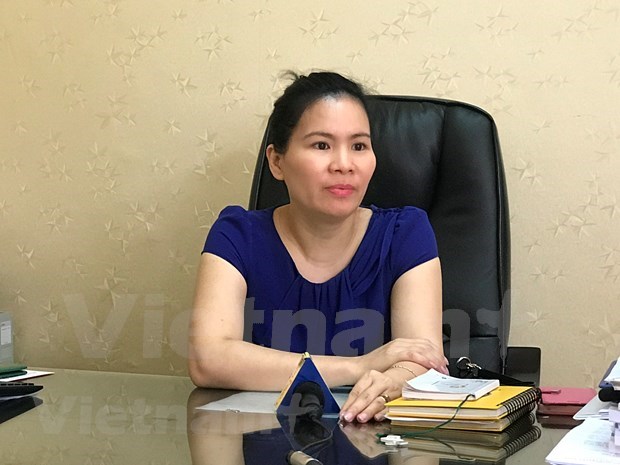 Phan Thi Thanh Xuan, Vice President and Secretary General of the Vietnam Leather, Footwear and Handbag Association(Photo: /VietnamPlus)
Phan Thi Thanh Xuan, Vice President and Secretary General of the Vietnam Leather, Footwear and Handbag Association(Photo: /VietnamPlus)
- In your opinion, who will the CPTPP impact on the export of the industry in 2019 and the following years?
Phan Thi Thanh Xuan: Leather products and footwear can enjoy an extensive cut in the tariff right after the CPTPP takes effect and with the trade advantages stipulated in the deal, Vietnam will be able to attract much foreign investment into the industry. The export revenue of the products to other CPTPP members will continue to rise in the years to come.
However, there is a fact that many CPTPP members like Japan, Australia, New Zealand, Singapore, Malaysia, Chile and Brunei have already had FTAs with Vietnam and the country is enjoying reduced tariff with those nations (except for the case of Canada, Mexico and Peru which have not reached FTAs). As a result, it is likely that there will be no sudden increase in the countries with whom Vietnam have had FTAs.
-One of the key points of the CPTPP is the principle of origin. What are the concrete requirements of the deal concerning the principle of origin?
Phan Thi Thanh Xuan: As for the principle of origin, under the CPTPP, the handbags using fabrics as a material must abide by the principle of “from yarn forward” like the case of textiles.
The CPTPP allows producers, exporters and importers certify the origins by themselves.
For Vietnam’s exports, they can apply two forms along with each other, namely to provide C/O in paper in the traditional way and competent importers certify the origins by themselves. After 10 years the CPTPP comes into effect, Vietnam will totally apply the self-certification of the origins.
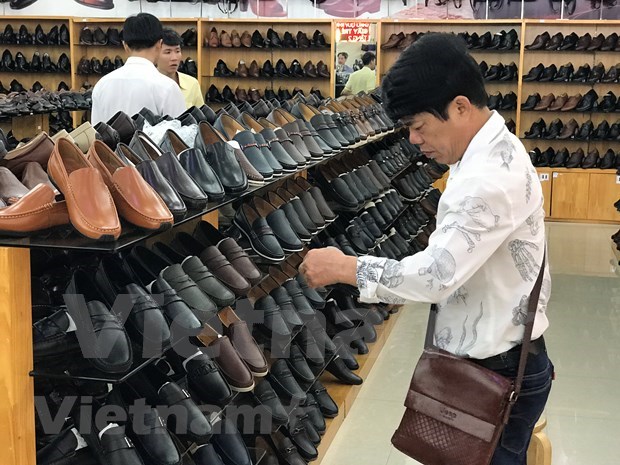 Illustrative photo (Source: VietnamPlus)
Illustrative photo (Source: VietnamPlus)
- So how is domestic exporting companies’ ability to meet the requirement now?
Phan Thi Thanh Xuan: To enjoy tariff preferences under the CPTPP, the enterprises must meet the requirement of the principle on origins. In other words, they must use materials of Vietnam or of other CPTPP members with the rate of origins as designated.
Domestic firms using materials imported from China, Republic of Korea, etc. will meet difficulties in implementing the principle when they export products to other CPTPP countries, that is why they must look for materials applied from CPTPP members.
- What are advantages and disadvantages for the leather and footwear industry this year?
Phan Thi Thanh Xuan: Obvious chances are coming for export growth. However, we also see challenges the industry must face and overcome to meet new conditions in the principle of origin.
Well-prepared firms will meet with no hurdles, but for those dependent too heavily on imports will miss the chance if they fail to meet the requirement.
Another difficult to say is the market approach. Many firms are familiar with small orders for domestic market only, that is why if they do not enlarge the scale and improve their production capacity when the chances come, they will fail to meet the requirement. Besides, financial and human capacities must also be improved for firms to not miss the chances.
- Thank you, Madame.-VNA










